Behind the seeds
Sometimes I almost wished that they would stop offering free shipping. There are enough different kinds of seeds in my collection to keep me busy but the April Fool’s Day offer was another difficult one to resist. These are the seeds that arrived today (in no particular order):
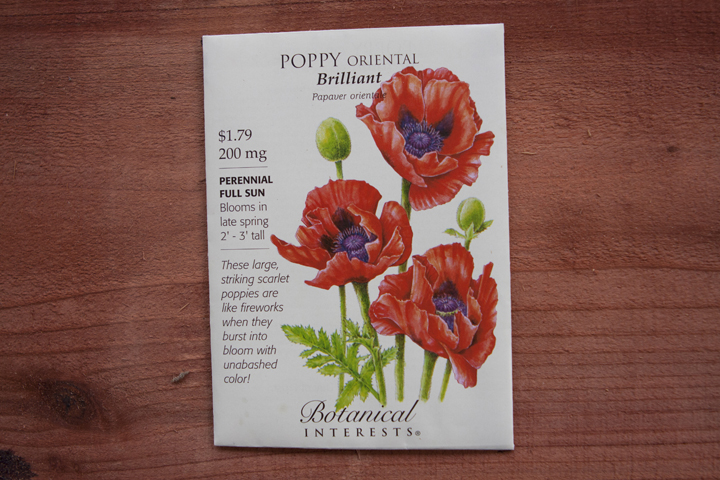
Oriental Poppy. At the last house I lived in, my immediate neighbor had a cluster of these growing in his garden. They looked amazing and seeing them assured me that they will grow in my area. I tried my hand at growing these and purchased seeds (from a seed company different than the current). It took a few tries before there was successful germination. In fact, it was not until I moved to my current house did I see poppy seedlings. The seedlings grew happily in a pot until one day to my horror I found that they had been mowed down by a cut worm. To say I was heartbroken would be an understatement. Afterward and as I had hoped, they regrew. I believe that was three years ago. The surviving plant is about 8-inches in diameter and it has yet to flower.
That plant may never flower so I hope to get a new start. This time I will also direct sow the seeds as it is written that they prefer that over being transplanted. Continue Reading
Building my first raised planter

Located close to the house and features of the house (like the brick succulent planter that it is adjacent to) aesthetics was one of the primary concerns when planning out this new ground to work and plant on. Raised planters with their long and symmetric lines are more aesthetically pleasing than say a row of nursery containers. Needing more growing area, it was time to finally install a more formal looking planter. Continue Reading
Corned Beef Hash with Potatoes from the Garden
Traditional American breakfast is my favorite type of breakfast. One of my favorite items is corned beef hash. With some potatoes harvested from the garden, I cook up some of that in my latest video.
Pruning and Digging Day
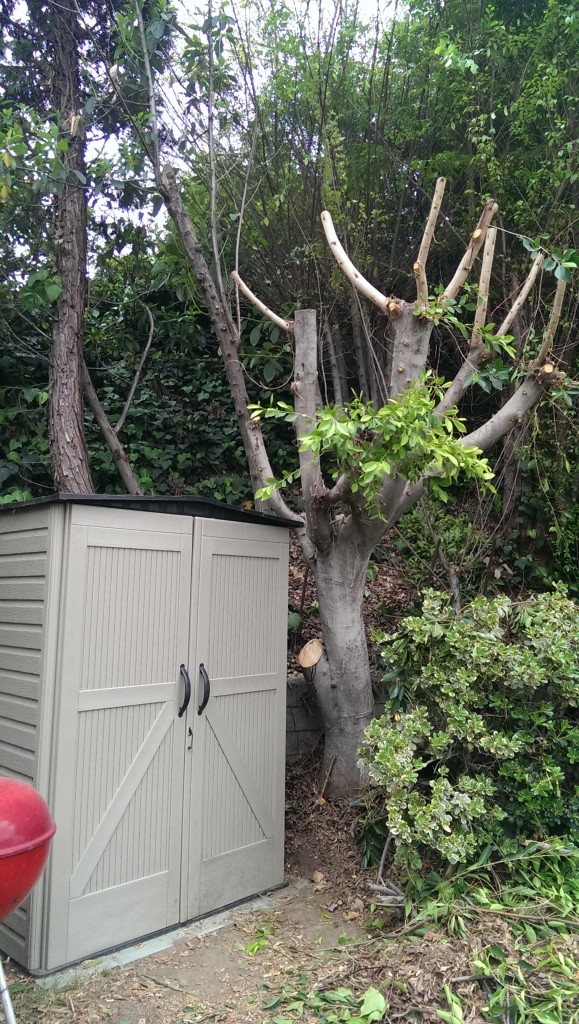
Today was a productive day. I got done what I have always wanted to do– lop off a part of the weeping fig (ficus benjamina) tree that was preventing the garden tool shed from sitting flush with the wall behind it. I also gave the weeping fig its second pruning since being acquainted with it. One of the reasons for the dramatic hair cut is to bring more light into the garden. Light that I need for sun loving crops. The second reason is to thin it out as the brown scale (insects) are beginning to amass. Continue Reading
February 2016 Fruit Tree Round Up
February 2016 fruit tree round up is in video format this year.
“Resort Garden” tour on YouTube
Often ti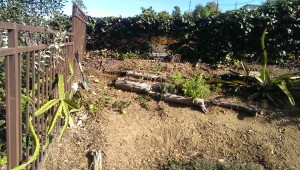 mes being a “Stay at home, Dad” means making sacrifices because there are simply not enough hours in the day to get everything done. Actually, a more accurate statement is, ‘ there are simply not enough hours in the day to get everything done without your neighbors thinking that you are crazy.’ If it was not weird, I would probably plug in my work light and garden into the night. Since it is, the alternative is to skip on a breakfast outing and instead stay behind and work in the garden.
mes being a “Stay at home, Dad” means making sacrifices because there are simply not enough hours in the day to get everything done. Actually, a more accurate statement is, ‘ there are simply not enough hours in the day to get everything done without your neighbors thinking that you are crazy.’ If it was not weird, I would probably plug in my work light and garden into the night. Since it is, the alternative is to skip on a breakfast outing and instead stay behind and work in the garden.
With no interruptions, I was able to create a few more planting plots by terracing the Resort Garden. I am very excited about the seeds that were sowed as a result: sun flowers, collards, brussel sprouts, marigolds, Thai basil.
Be sure to check out the video tour of this space!
A Thing Or Two About Fruit Trees
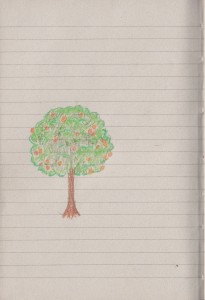 For anyone interested in growing fruit tree(s) and anyone interested in how their fruit is grown.
For anyone interested in growing fruit tree(s) and anyone interested in how their fruit is grown.
With exception to tropical fruit, most of the commercially available fruit (citrus, apple, peach, avocado, etc) does not exist in the wild. The fruit we consume was created from selective breeding (hybridization) and accidental discovery. These fruit are mutant fruit; if you will.
“Hybridization occurs in one of three ways. People can manually cross citrus through assisted sexual reproduction, transferring pollen from one plant to another and seeding from resulting fruit. This kind of trial-and-error, wait-and-see experimentation requires great patience. Alternatively, people can hunt for desirable varieties that appear spontaneously on eccentric tree branches– mutations known as bud sports or chimeras. In the atomic age, plant breeders gained a third technique: bombarding seeds with radiation to induce mutations. (The popular Rio Red grapefruit came into being at Brookhaven National Laboratory on Long Island.) Once a desirable varietal has been created or discovered, it must be asexually copied to be perpetuated. Citrus hybrids are unstable: sweet orange seed may sprout into a sour lemon. Only grafting produces uniform, predictable results.”
Farmer, Jared. Trees in Paradise: A California History. New York: W. W. Norton, 2013. 227-228. Print.
Continue Reading
Meet my water chicken
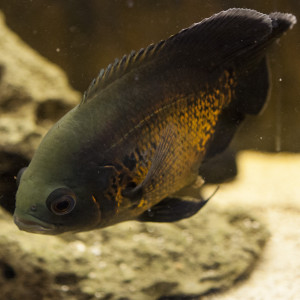 Meet “Roc,” the red oscar cichlid. He is the latest Garden Pals member; and eats like a very hungry caterpillar. In fact, his favorite snacks are very hungry caterpillars. A very eager feeder, he wastes no time waiting for his meals to hit the water. Often he will leap out of the water and help himself. (See video below.)
Meet “Roc,” the red oscar cichlid. He is the latest Garden Pals member; and eats like a very hungry caterpillar. In fact, his favorite snacks are very hungry caterpillars. A very eager feeder, he wastes no time waiting for his meals to hit the water. Often he will leap out of the water and help himself. (See video below.)
